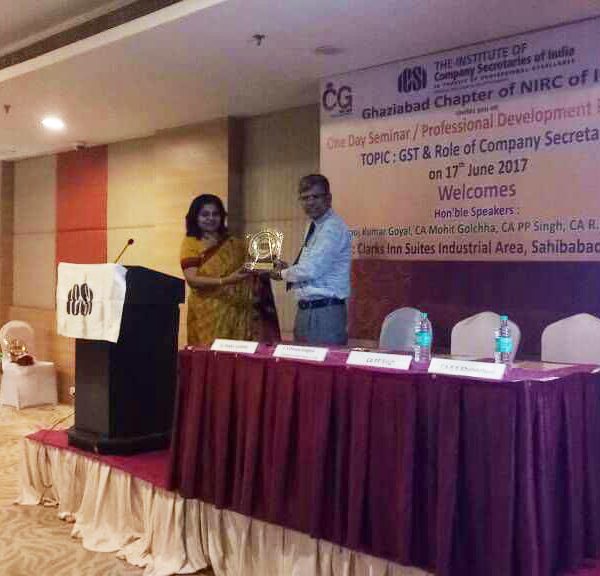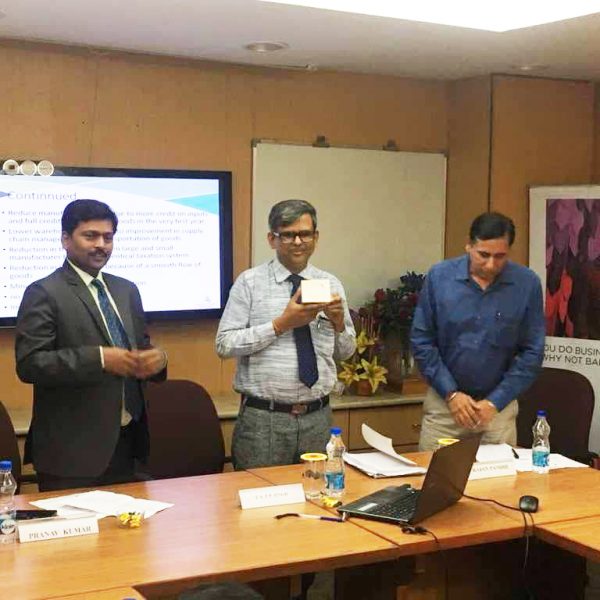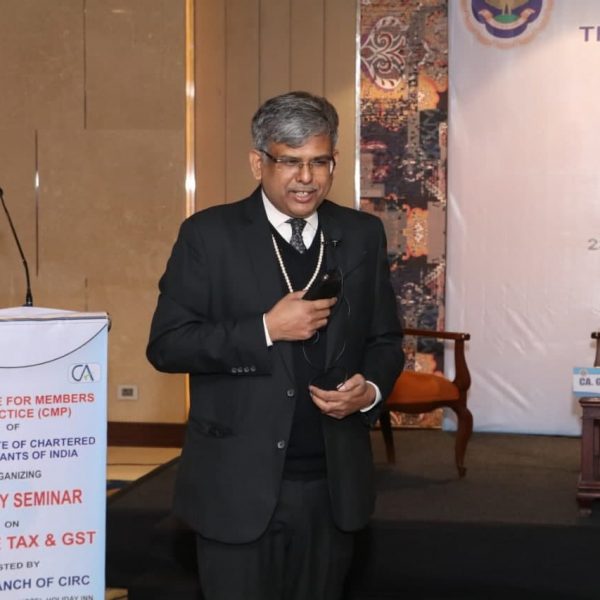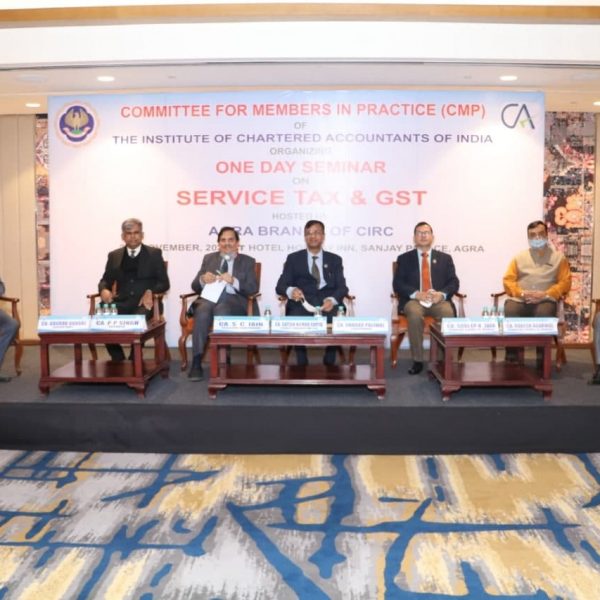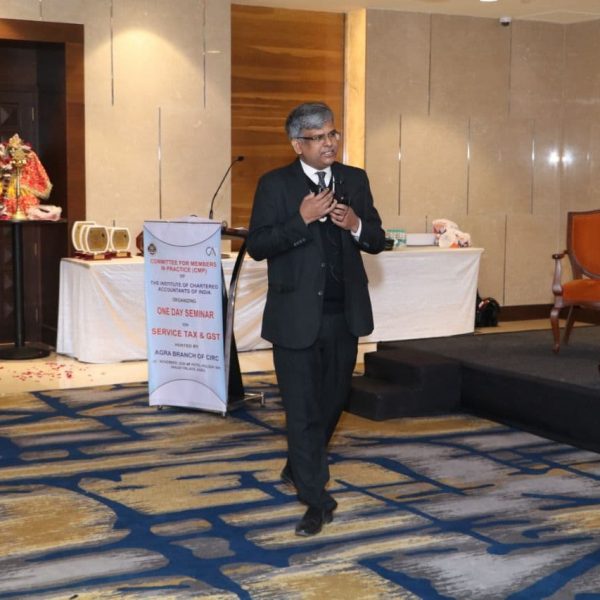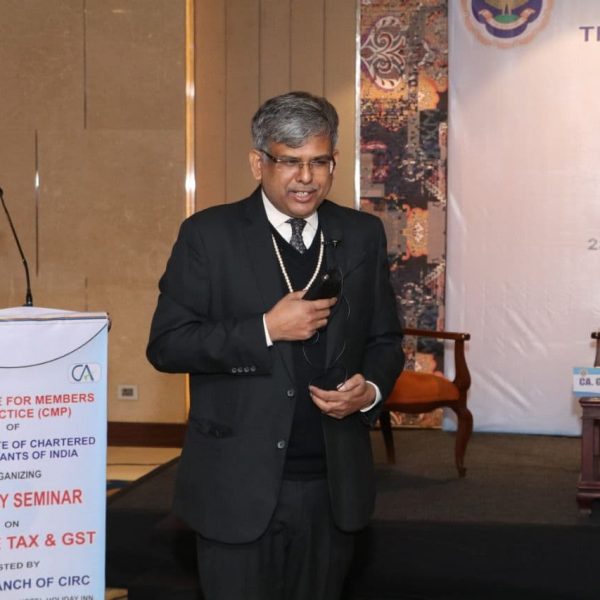Unexplained investment under Section 69 of The Income Tax Act 1961
introduction: Section 69 is a weapon in the hands of the AO to detect tax evasion in respect of clandestine investments made by the assessee during the year but not recorded in the books of accounts, if any, maintained by him and the assessee does not offer any explanation or the explanation offered by him is not satisfactory to the AO. Section 69 gives immense power to AO to treat the value of investments as the income of the assessee of such a year.
Power of AO: The Assessing Officer has discretionary power as the word used is may and not shall on the recommendation of a select committee and the AO is not obliged to make addition in every case. But section 69 does not provide any guideline about the extent and length of the discretionary power given to AO in the matter of treating the investment as income that is unexplained or unsatisfactorily explained by the investor-assessee. Therefore, AO is expected to appreciate the reasonable explanation offered by the assessee, and the evidence produced before him about the nature and source of investment and he can not make the addition merely on surmises, conjectures as well as without any supporting evidence. (Ashok Kumar Rastogi V CIT (1991) 100 CTR 204.)
Essential conditions for invoking section 69 are
- An investment made by the assessee during PY
- Investment may be in the name of the assessee or any other person’s name
- Assessee is not necessarily the owner of the investment
- Investment not recorded in the books of account if any maintained by the assessee, and
- No explanation was offered by the assessee or an unsatisfactory explanation to AO
- The value of investment shall be deemed income of the assessee.
Note: Investment may be capital assets or other business assets such as stock in trade or even personal assets.
Unexplained Investment outside India shall be covered under the Black Money (undisclosed foreign income and assets ) and imposition of tax Act 2015.
In the case of Benami assets, section 69 of the Income Tax Act as well as the Prohibition of Benami transaction act 1988 both shall be applicable but for benamidar section 69 will not attract as he has not made any investment, he is just a name lender.
The opportunity of being heard before treating undisclosed income: Since the words used in Section 69 are “assessee offers no explanation about the nature and source of the investments or the explanation offered by him is not, in the opinion of the Assessing Officer, satisfactory” conspicuously indicates that there must be an opportunity of being heard to the assessee.
Cash deposit into a bank: Nature and source of availability of cash deposit into a bank to be explained by the assessee to avoid tax on unexplained income u/s 69 /69B. Manoj aggarwal Vs. CIT [2008] 113 ITD 377 Delhi
Deposit into the bank not explained- could be addition u/s 69: Gross professional receipt disclosed by the assessee from ‘G’ was Rs. 7,24,554 – After deduction of tax at source of Rs. 38,041 on such receipt, net receipt amounted to Rs. 6,86,513 – However, there was credit in assessee’s bank account amounting to Rs. 7,06,680 from ‘G’ – Assessing Officer treated difference between the said amount of credit and net receipt as assessee’s unexplained investment and made addition – Whether since assessee could not give any satisfactory explanation for such excess credit in his bank account, impugned addition was liable to be sustained.
Importance of books for section 69:
If books of account maintained and investments duly recorded therein and reported in ITR, less chance of addition under this section.
If books of account are not maintained and the assessee doesn’t offer an explanation or the explanation offered is not satisfactory then AO may treat the undisclosed investment. For example assessee firm’s investment in time deposit in the post office is not shown in the balance sheet, investment may be taxed as undisclosed investment income. Ajatna construction Co. Vs. CCIT [2009] 318 ITR 163 PAT.
Year of taxability: taxable in the year in which investments are made.
Satisfaction of AO is most important and not the satisfaction of third parties. Where addition made on the observation of the sales tax officer and AO does not make any independent inquiry but the assessee discharged the primary onus by showing an entry in the books of account, payment by account payee cheque, purchase invoice, etc. purchase cannot be considered bogus. ITO Vs. Permanand [2008] 25 SOT 11 Jodhpur
Legal fiction u/s 50C can’t be extended for treating unexplained investment/expenditure in section 69/69A/69B: a proposition cannot be considered that stamp duty value (-) sale consideration firstly taxed under section 50C and again taxed under section 69 for investment in New assets as an unexplained investment. Subash chand Vs. CIT 18 TAXMANN.COM 149/ [2012] 49 SOT 732.
further in the case of CIT Vs. Chandni Bhuchar [2010] 191 taxman 142 P & H it was decided that in absence of any legally acceptable evidence, valuation done for purpose of section 50C would not represent actual consideration passed on to the seller.
DineshJain Vs. DCIT [2009] 34 SOT 444 (Delhi) ITAT B-Bench: In view of the fact that no material was found indicating anything paid over and above the registered sale price of the property so acquired, no addition could be made on presumptions and suspicions. Para 5
Therefore, the addition made by the Assessing Officer under the head ‘Unexplained investment’ on account of various properties purchased by the assessee during the block period on the basis of fair market value as estimated by him was not justified and liable to be deleted. [Para 6]
The burden of Proof: The initial burden lies on the assessee to offer an explanation in respect of the concerned investment. Therefore, it is the duty of the assessee to offer the relevant explanation with suitable evidence of the investment. It is the right of the Assessing Officer to frame the opinion of whether the explanation offered by the assessee is acceptable or not acceptable.
Value of undisclosed investment to be treated as income:
What is to be taxed cost’, ‘price’ or ‘value of the investment and the meaning of these words in common parlance.
- Naresh Behal Vs. ITO [1992] 41 ITD 298 (ITAT- D bench DELHI): It was analyzed in detail in this case in relation to the construction of the property. Where Assessee has maintained account of the construction of the factory building and in the wealth-tax case as well as income-tax case cost of construction up to 31-3-1980 had not been disputed by the department, ITO was not justified in rejecting the cost of construction as per reported in returned by the assessee and additions cannot be made by ITO adopting cost or construction as determined by Official Valuer under section 133(6). The Hon’ble Tribunal held that “It is by now well-settled that the entries in the account books maintained in the regular course of the things are relevant and admissible in evidence and, in a sense, carry with them a presumption of their correctness until the contrary is proved. As per section 34 of the Indian evidence act “Entries in the books of account, including those maintained in an electronic form regularly kept in the course of business, are relevant whenever they refer to a matter into which the Court has to inquire, but such statements shall not alone be sufficient evidence to charge any person with liability.”
Therefore, if it is proved on record that a person has maintained the record of expenditure in the regular course of the things, such records must be given due evidentiary value and should not be lightly overlooked or rejected. Even if such a piece of evidence is sought to be rebutted by some other admissible evidence then the worth of the two should be impartially evaluated and the more weighty should be accepted.
Further, evidence showing or suggesting the incurring of actual expenditure should ordinarily be preferred to the estimation of the expenditure incurred unless the former suffers from patent defects of falsity or incorrectness. In other words, direct evidence is to be preferred to indirect evidence because direct evidence does not require any suppositions or assumptions to arrive at a conclusion based on the facts. Direct evidence is more valuable than any other type of evidence.
The concept of ‘cost’ should not be compared or equated with the concepts of ‘Price’ and/or ‘value’ ‘Cost’ signifies the actual expenditure incurred on the manufacture, production, or construction of an article, goods, or thing. Price refers to the amount paid for the acquisition of an article, goods, or thing. In the hands of the purchaser, ‘the price paid represents the ‘cost of acquisition’ which is not synonymous with ‘the cost of production or construction ‘Value’ is the amount, especially a material or monetary one, considered fair exchange in return of an article, goods, or thing.
‘Cost’ does not change without additional expenditure whatever has been incurred on bringing an article, goods, or thing into existence and remains unaffected by subsequent circumstances, unless additions, or alterations in the object have been made. ‘Price’ would be affected by the doctrine of ‘supply and demand’ It may be less than the actual cost or higher than the ‘value’ depending upon the circumstances prevailing at a particular point in time. Value goes on appreciating or depreciating by lapse of time, depending upon, besides the doctrine of supply and demand, location, site availability of amenities, liquidity, marketability, etc., of the thing concerned.
“The concept of ‘cost of construction’ is, therefore, altogether different from the concept of ‘valuation’ of a property. In the Act, we are concerned with the ‘cost of construction’ in the context of ‘investment made in an immovable property in a particular year rather than with the valuation thereof on a particular date. Therefore, it is all the more desirable that the direct evidence on ‘cost of construction’ be, unless found unreliable and unacceptable, preferred to the indirect evidence on the point coming through the road of estimated valuation.”
In the instant case, it was not disputed that the assessee had maintained the account of the construction of the factory building. In fact, the expenditure of Rs. 2,43,503 stated in such accounts to have been incurred during the period from 1-4-1979 to 31-3-1980 was accepted by the department. That means that a part of the same evidence was accepted as correct and true. No reasons were given by the ITO not to have similarly accepted the remaining part of the same evidence representing an expenditure of Rs. 1,28,332 incurred during the year under consideration, as true and correct. Without pointing out the defects in the account of expenditure the ITO was not at all justified in calling for a piece of information under section 133(6) on the point of cost of construction.
Further, information called for by an ITO under section 133(6) does not carry the same probative value as is attached in law to the report of valuation called for under section 55A of the Income-tax Act or under section 16A of the Wealth-tax Act, 1957. While the former is simply advisory in character and persuasive in effect the latter is binding upon the ITO/WTO. In fact, the information obtained under section 133(6) is relevant to the extent of the fact,s sought to be obtained through such information.
Further, it was undisputed that the revenue had accepted the same figure of Rs. 3,71,835 on account of the cost of construction of the factory building up to 31-3-1980 in the assessee’s wealth-tax case for the assessment year 1981-82. Under the circumstances, the cost of construction as returned by the assessee was required to be accepted and no addition on account of the difference between the cost of construction as declared by the assessee and as that estimated by the Official Valuer was justified and the addition made of Rs. 1,03,980 was, therefore, deleted.
- ModernConstructionDevelopment & Project Promotion Vs. ACIT [1997] 63 ITD 235 (CAL. ITAT): for purpose of making an addition towards unexplained investment, Assessing Officer is under a legal obligation to verify books and vouchers maintained by the assessee in support of the cost of construction shown by him and point out specific defects. only after the rejection of books or upon pointing out defects, Assessing Officer would acquire the right to refer the matter to Valuation Officer. when the assessee produces a registered valuer’s report based on State PWD rates, it could not be -simply rejected without giving cogent reasons
Addition for the household article: It is difficult for any person to maintain and preserve purchase invoices or bills in respect of various household articles which are purchased from time to time as is common knowledge. Thus where the assessee and his other family members were all income-tax assessees declaring substantial income every year, a huge addition of Rs. 2,50,000 could not be made on the assumption that all those articles found in the house at the time of the search were purchased by the assessee in the financial year or even during the previous year relevant to the year under appeal. DEVILALGHERILALSHAH vs DCIT [1995] 52 TTJ 618 (Ahmedabad – ITAT)
Addition for undisclosed gold ornaments: It was not possible to accept the assessee’s alternative argument that if gold ornaments were treated as unexplained, the addition should be made after making an allowance of 21 percent for alloys in the value of gold, as was done in the assessee’s own wealth-tax assessments for certain years. The addition under section 69 has to be made on the basis of what is the amount of investment which the assessee should have made in acquiring the undisclosed assets and, hence, the value of ornaments has to be taken as the value which a purchaser would pay while purchasing the ornaments, and not as gold. In any case, merely because some allowance had been made in deciding appeals against wealth-tax assessment order, it could be no ground for allowing the relief in respect of additions made under section 69. KANAIYALALDOSHI vs ITO [1991] 58 Taxman 231 (Jaipur).
During the course of the search, certain jewellery was found in the assessee’s premises – Being not convinced with the assessee’s explanations, Assessing Officer made the addition of the entire value of jewellery – Whether in view of instruction issued by the Board that while making addition on account of unexplained investment in jewellery, at least, a credit of 500 grams per married lady and 250 grams for unmarried girl and 100 gm for the male member should be given as per CBDT instruction no. 1916 dated 11/05/2021, Assessing Officer was to be directed to recompute unexplained investment in jewellery accordingly – RAJENDRAC.SHAH vs JOINT COMMISSIONER OF INCOME [2007] 158 Taxman 170 (Mumbai). ITAT.
Addition on Account of Stock discrepancies – the difference in quality, the value of stock, and unrecorded purchases:
No addition on account of difference in the value due to different valuation methods but no difference in quantity: Assessing Officer made the addition of Rs. 22.67 lakhs as the difference in stock, based on the value of inventory prepared by the search party and as per books of account but in assessment order there was no finding of any excess items of stock found during the search. There was no evidence of unrecorded purchase or sale vouchers or sale outside books or receipt of any amount paid underhand. The difference in value was mainly on account of rates difference as Assessing Officer adopted the rate taken by the search party instead of following the correct method of purchase price or market rate, whichever was less, the addition made u/s 69 was not warranted MEHRAARTPALACE vs DCIT [2001] 114 Taxman 201 (Delhi) ITAT.
The difference in quantity due to unaccounted stock received on an approval basis- no addition to be made: C. CHANDRASHEKAR vs ITO [2001] 115 Taxman 315 (Bangalore) ITAT. / DEVISILKS & ORS. vs ACIT [2002] 74 TTJ 551 (BANG) ITAT.
Addition based on the statement of partner /director before other tax /other authorities: Based on sales tax authorities’ assessment and consequent addition on account of excess stock of paddy, the Assessing Officer also made an addition under section 69 being an unexplained investment in excess stock. Considering the fact that the sales tax department is a Government department and that excess stock was found on inspections and addition in sales tax assessment had also been accepted by the assessee, It was justified to confirm addition u/s 69 R.K. RICE & GENERAL MILLS vs ITO [2001] 118 TAXMAN 189 (CHD.) ITAT.
Based on an admission made by the partner of the assessee-firm before Central Excise authorities that they had received certain processed man-made fabrics from processors which were without the cover of invoices and without payment of Central Excise duty but the statement was retracted in the very next opportunities immediately after making a statement. The Assessing Officer has not made any further enquiry, never recorded any further statement, copy of the statement recorded by the central excise authority was never provided to asseesse. No independent investigation by the AO. Whether since the assessee had been maintaining complete financial and quantitative records at all stages of production and no specific defects had been pointed out by lower authorities, the totality of facts and circumstances did not justify additions under section 69 merely on basis of the statement of the said partner without any further supporting evidence being on record. R.K. Synthetics vs ITO [2004] 3 SOT 268 (Jodhpur)/[2004] 81 TTJ 909 ITAT.
Where addition was based solely on the assessee’s confession during the survey which was later retracted by the assessee has produced material during assessment proceedings and on due appreciation thereof, CIT(A) had accepted the explanation of the assessee for retraction of his admission as bona fide and further accepted books of account prepared by the assessee on basis of duly verified primary evidence and Tribunal had confirmed the order of Commissioner (Appeals), in view of retraction of admission by the assessee, deletion of addition was justified. ITO Vs.Vijay Kumar Kesar [2010] 327 ITR 497 (Chhattisgarh) ITAT.
The stock belongs to others Where gold found during a search at the assessee’s premises being jeweller’s and such gold found belonged to customers and in respect of such gold assessee had maintained account as reacquired under Gold Control Act and issued a receipt, addition on account of such gold was not justified MANOHARJEWELLERS vs ACIT [2002] 75 TTJ 650 (Jodhpur) ITAT.
Unrecorded purchase: The addition made by the Assessing Officer in respect of unrecorded purchases found during the search, was deleted by the first appellate authority on grounds that the net effect would be nil as it should be first included in total purchases to arrive at the correct profit and then separately added as an unexplained investment. Additions, on account of profit earned by making sales out of these purchases were also to be made SHUBHAMCONSTRUCTION vs ACIT [2002] 77 TTJ 520 (Nagpur) ITAT.
Surrender during the survey: Where Assessing Officer had made an addition on account of undisclosed stock found with the assessee during the course of a survey, and it was a genuine purchase made by the assessee prior to the date of the survey but was not entered in purchase account in financial books, such purchases to be recorded in incomplete books of account at the time of the survey and that stock position was reconciled, and therefore no addition was justified ForechIndiaLtd vs CIT [2010] 231 CTR 267 (Delhi) (HC).
Where an addition was made on basis of surrender by the assessee during the survey as it could not produce a bill for the purchase of goods but the assessee produced bills subsequently during the course of assessment proceedings, an addition was to be deleted. ITO Vs.DINESH KUMAR [2005] 98TTJ 695 (JODH)
Sale agreement vs sale deed – the difference in consideration: though, it was alleged by the assessee that the sale agreement had been inflated with a view to obtaining a loan, he failed to show any further action taken by him in order to obtain a loan on basis of said agreement – Even valuation, as fixed by inspector in respect of disputed property and accepted by Tribunal, was not based on any supporting material – Whether, in view of circumstances, it could be concluded that sale consideration shown in sale deed was incorrect and the amount mentioned in sale agreement was real consideration in respect of disputed property – Held, yes K. Dadakhan vs CIT [2003] 133 Taxman 732 (Madras) (HC).
Non-maintenance of the stock register may lead to invoking section 69. since the assessee failed to maintain a stock register in course of his business, on facts, Assessing Officer was justified in invoking section 69 Sanjay son of Dwarkadas Jajoo Vs. CIT [2006] 154 Taxman 101 (Madhya Pradesh) (HC).
The difference in stock as per the stock statement submitted to the bank and stock as per books/ balance sheet. – no addition for the difference. Supporting Case laws confirming such view as under:
- ITO Vs. DEVI DAYAL RICE MILLS [2002] 75 TTJ 24 (Amritsar)[ITAT]
- CIT Vs.ApcomComputers (P.) Ltd [2007] 158 Taxman 363 (Madras) (HC)-inflated stock statement given to the bank for obtaining higher loan facilities was on an estimate basis without any actual physical verification and stock disclosed for assessment purposes was based on actual physical verification, difference in the value of the stock could not be treated as assessee’s undervaluation of stock or undisclosed income.
- Where there was a difference between the value of stock shown in accounts and the value disclosed to a bank, and Tribunal’s finding was that Assessing Officer had not been able to point out any discrepancy in the quantity of stock hypothecated to the bank and the quantity of stock as per books of account, on the face of such finding, even if there was some difference in valuation of stock as mentioned above, it could not be said to be resulting into any income from undisclosed sources, coming to the assessee, capable of being added to its income u/s 69. CIT Vs.Laxmi Engineering Industries [2009] 308 ITR 279 (Rajasthan) (HC)
Adjustment sought if addition confirmed u/s 69:
- Set off of excess stock against unaccounted profit from unaccounted sales. ACIT Vs.DR. MOHAN LAL SWARNKAR [2006] 151 TAXMAN 46 (JP.) (MAG.)
- In course of a search carried out at the assessee’s residential and business premises, certain documents were found and seized which showed that he had made unaccounted sales of a certain amount during the course of his trading business – Assessing Officer made an addition of that amount but the same was deleted by Tribunal holding that assessee could not be taxed on the entire amount but was liable to be taxed only on the gross profit earned on said sales to be taxed because all purchases were made from reputed companies and/or their dealers and such purchases were fully vouched for. CIT Vs.Gurubachhan SinghJ. Juneja [2008] 171 Taxman 406 (Gujarat).
Conclusion: Effort has been made to explain the provisions of unexplained investments under provisions of section 69 of the income tax Act 1961 in the best possible way, however for any clarification reader may approach for any clarification at cappsingh@gamil.com .

